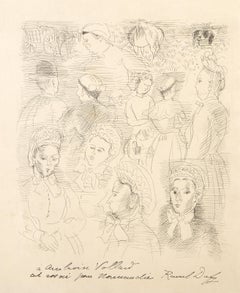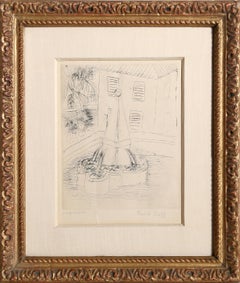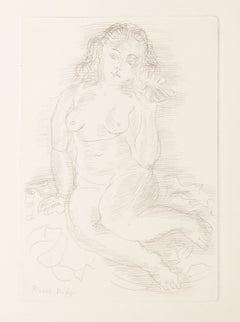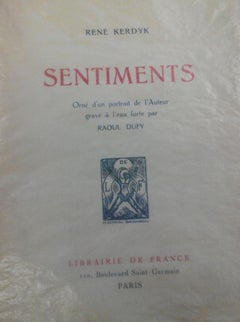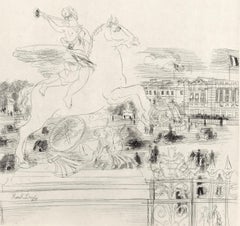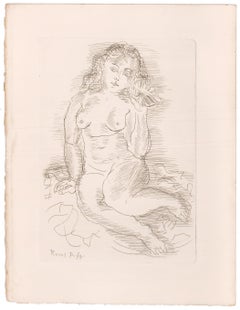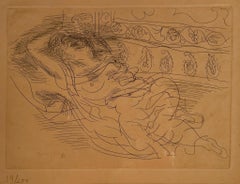Raoul Dufy Etchings
1930s Impressionist Figurative Prints
Etching
1920s Impressionist Figurative Prints
Etching
1950s Impressionist Prints and Multiples
Etching
1930s Impressionist Prints and Multiples
Etching
1920s Surrealist More Art
Paper
1930s Modern Landscape Prints
Etching
1930s Nude Prints
Paper
Mid-20th Century Abstract Nude Prints
Etching
20th Century Figurative Prints
Etching
1920s French School Prints and Multiples
Etching
Late 20th Century Figurative Prints
Archival Paper, Etching
1940s Modern Portrait Prints
Etching
1940s Modern Portrait Prints
Etching
1940s Modern Portrait Prints
Etching
1940s Modern Portrait Prints
Etching
1940s Modern Portrait Prints
Etching
1940s Modern Portrait Prints
Etching
1940s Modern Portrait Prints
Etching
1940s Modern Portrait Prints
Etching
1940s Modern Portrait Prints
Etching
1940s Modern Portrait Prints
Etching
1940s Modern Portrait Prints
Etching
1940s Modern Portrait Prints
Etching
1940s Modern Portrait Prints
Etching
Vintage 1930s French Drawings
Vintage 1920s French Art Deco Drawings
Paper
1940s Modern Portrait Prints
Etching
1930s Modern Figurative Prints
Etching
1950s Modern Figurative Prints
Etching
1930s Prints and Multiples
Etching
1950s Modern Figurative Prints
Etching
Mid-20th Century Fauvist Nude Prints
Etching
1920s Modern Figurative Prints
Watercolor, Etching
Raoul Dufy Etchings For Sale on 1stDibs
How Much are Raoul Dufy Etchings?
Finding the Right Prints-works-on-paper for You
Decorating with fine art prints — whether they’re figurative prints, abstract prints or another variety — has always been a practical way of bringing a space to life as well as bringing works by an artist you love into your home.
Pursued in the 1960s and ’70s, largely by Pop artists drawn to its associations with mass production, advertising, packaging and seriality, as well as those challenging the primacy of the Abstract Expressionist brushstroke, printmaking was embraced in the 1980s by painters and conceptual artists ranging from David Salle and Elizabeth Murray to Adrian Piper and Sherrie Levine.
Printmaking is the transfer of an image from one surface to another. An artist takes a material like stone, metal, wood or wax, carves, incises, draws or otherwise marks it with an image, inks or paints it and then transfers the image to a piece of paper or other material.
Fine art prints are frequently confused with their more commercial counterparts. After all, our closest connection to the printed image is through mass-produced newspapers, magazines and books, and many people don’t realize that even though prints are editions, they start with an original image created by an artist with the intent of reproducing it in a small batch. Fine art prints are created in strictly limited editions — 20 or 30 or maybe 50 — and are always based on an image created specifically to be made into an edition.
Many people think of revered Dutch artist Rembrandt as a painter but may not know that he was a printmaker as well. His prints have been preserved in time along with the work of other celebrated printmakers such as Pablo Picasso, Salvador Dalí and Andy Warhol. These fine art prints are still highly sought after by collectors.
“It’s another tool in the artist’s toolbox, just like painting or sculpture or anything else that an artist uses in the service of mark making or expressing him- or herself,” says International Fine Print Dealers Association (IFPDA) vice president Betsy Senior, of New York’s Betsy Senior Fine Art, Inc.
Because artist’s editions tend to be more affordable and available than his or her unique works, they’re more accessible and can be a great opportunity to bring a variety of colors, textures and shapes into a space.
For tight corners, select small fine art prints as opposed to the oversized bold piece you’ll hang as a focal point in the dining area. But be careful not to choose something that is too big for your space. And feel free to lean into it if need be — not every work needs picture-hanging hooks. Leaning a larger fine art print against the wall behind a bookcase can add a stylish installation-type dynamic to your living room. (Read more about how to arrange wall art here.)
Find fine art prints for sale on 1stDibs today.
- Who was Raoul Dufy inspired by?1 Answer1stDibs ExpertApril 5, 2022Painter, drawer, designer and printmaker Raoul Dufy was greatly inspired by impressionists like Camille Pissarro and Claude Monet. In later years, he took inspiration from Henri Matisse’s Luxe, Calme et Volupté. And even later in his work, he evolved again after connecting with the work of Paul Cézanne and Cubism. After this era, he developed his own style and distinctive artistic approach. On 1stDibs, find a variety of original artwork from top artists.
- How did Raoul Dufy paint?1 Answer1stDibs ExpertApril 5, 2022To paint, Raoul Dufy spread thin layers of quick-drying paint over a white background. Then, he would sketch objects over top using curvy, wavy lines. On 1stDibs, find a collection of Raoul Dufy art from some of the world’s top sellers.
- 1stDibs ExpertJune 6, 2024No one knows for sure how many paintings Raoul Dufy painted. However, more than 160 of his works are known. Some of his most famous pieces include Boats at Martigues, Bathers, The Mexican Musicians, The Kessler Family on Horseback and Regatta at Cowes. On 1stDibs, explore a range of Raoul Dufy art.

